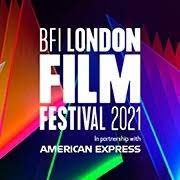 As Wes Anderson’s career has progressed, his successive films have become more idiosyncratic – somehow more Andersonian. However, beneath the precise – some may say precious – mechanics of Anderson’s filmmaking, at heart, there have always been significant reflections driving the characters and narratives presented. As well as being his breeziest feature in some time, THE FRENCH DISPATCH’s vignette structure lacks the cohesion and thematic gravitas of Anderson’s strongest work. The deeper message is probably more of a footnote here, but the best parts of THE FRENCH DISPATCH capture the love of both written and visual media.
As Wes Anderson’s career has progressed, his successive films have become more idiosyncratic – somehow more Andersonian. However, beneath the precise – some may say precious – mechanics of Anderson’s filmmaking, at heart, there have always been significant reflections driving the characters and narratives presented. As well as being his breeziest feature in some time, THE FRENCH DISPATCH’s vignette structure lacks the cohesion and thematic gravitas of Anderson’s strongest work. The deeper message is probably more of a footnote here, but the best parts of THE FRENCH DISPATCH capture the love of both written and visual media.
The film is structured around an edition of The French Dispatch of the Liberty, Kansas Evening Sun, a The New Yorker-esque magazine edited by Arthur Howitzer (Bill Murray) in (the obviously fictional, from the French wink to the audience in the town’s name) Ennui-sur-Blasé. Arthur advocates for his writers with a passion but is an efficient man who prominently displays a ‘No Crying’ sign above his office door. The film establishes the publication and staff with a piece by travel writer Herbsaint Sazerac (Owen Wilson) before proceeding to three longer segments, each anchored by the musings of one of the magazine’s writers.
“…beneath the precise – some may say precious – mechanics of Anderson’s filmmaking, at heart, there have always been significant reflections driving the characters and narratives presented.”
In the introductory section, Anderson’s visuals (not to mention the vignette structure) resemble his Swedish near-namesake Roy Andersson’s. As a waiter elaborately climbs a series of exterior stairs in a static shot, or an Ennui-sur-Blasé street gently erupts to life from a similarly fixed viewpoint, the comic absurdity of the motion and cool palette feel very akin to YOU, THE LIVING or ABOUT ENDLESSNESS. As the film progresses, Anderson plays with the form of the film. The aspect ratio shifts as in THE GRAND BUDAPEST HOTEL, and the film goes between monochrome in the recounts of articles (perhaps alluding to the black and white clarity of the printed text) and his now-familiar bright pastels.
The varying interest levels across the three main chapters make THE FRENCH DISPATCH a patchier affair than most of Anderson’s best work. The most captivating is the first one – The Concrete Masterpiece – charting Moses Rosenthaler’s (Benicio Del Toro) creation of a valuable and famous artwork from prison. Adrien Brody is superbly cynical as art dealer Julien Cadazio in this story, which also contains Anderson’s most elegant visual work in the film. A stage-like transition from the young Moses (Tony Revolori) to Del Toro’s older, more haggard man finds a delightful way to convey the implied elegance of the writing of J.K.L. Berensen (Tilda Swinton) within a visual medium.
“…the theme [THE GRAND BUDAPEST HOTEL] shares with THE FRENCH DISPATCH highlights the importance of preserving people and places through storytelling. THE GRAND BUDAPEST HOTEL celebrates the stories, and THE FRENCH DISPATCH the storyteller.”
Although the film remains entertaining, it doesn’t quite achieve the same level of engagement with the characters as it does in the first ‘article’. Revisions to a Manifesto, ‘written’ by Lucinda Krementz (Frances McDormand), suffers from the student revolutionaries she profiles not being terribly interesting. Although the blame can mainly be laid at an unexpressive leader of this movement (Timothée Chalamet), with most of the expression and humour in that role derived from Anderson’s framing and blocking, the key supporting figures are not given much to work with in the script. Lyna Khoudri has recently done stellar work in GAGARINE, but her small role here is preciously thin. In the final segment, Jeffrey Wright is magnetic as Roebuck Wright, with his dulcet tones a superb fit for the last narration-heavy sequence chronicling the abduction of a police commissioner’s son. However, as delightful as the animations augmenting this stretch are – and as comedic as the framing of standoffs between kidnappers and police is – Wright is left to carry this segment almost alone. Further, his soulful recounting of the opportunity Arthur gave Roebuck is one of the few performances which unambiguously allows us to read between the lines of the film’s surface aesthetics.
The more meaningful thesis lingering beneath THE FRENCH DISPATCH’s typical Anderson whimsy is related to authenticity in recounting tales and events. “Just try and make it sound like you wrote it that way on purpose,” is the recurring refrain of Murray’s Howitzer. A truthful moment excised by Roebuck for being too sad is returned to the draft by Arthur. Anderson’s characters wrestle with their understanding of the world through their writing, trying to make sense of the people they encounter and experience.
If THE GRAND BUDAPEST HOTEL mourned the loss of more civil times rather than artistic journalism, the theme it shares with THE FRENCH DISPATCH highlights the importance of preserving people and places through storytelling. THE GRAND BUDAPEST HOTEL celebrates the stories, and THE FRENCH DISPATCH the storyteller. Not every story in this film is a hypothetical page-turner, but the value of each one is clear, and Anderson remains one of the best cinematic authors.

